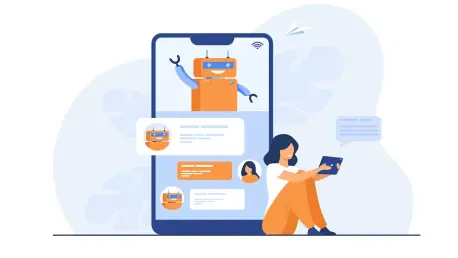Imagine a world where customer service calls sound as natural as a chat with a friend, even in the noisiest of environments, or where businesses can seamlessly connect with clients across dozens of languages without missing a beat. This is the promise of conversational AI, and Telnyx, a key player in communications infrastructure, is at the forefront of making this vision a reality. This roundup dives into diverse opinions, tips, and reviews from industry experts, developers, and business leaders to explore how Telnyx’s latest platform updates are reshaping voice interaction technology. The purpose is to uncover the strengths, challenges, and potential of these advancements through a variety of perspectives, offering a comprehensive look at their impact on the field.
Unpacking Telnyx’s Latest Conversational AI Innovations
Cutting-Edge Voice Realism: Azure Neural HD and NaturalHD Voices
Industry voices are buzzing about Telnyx’s integration of Microsoft Azure Neural HD voices alongside its proprietary NaturalHD enhancements. Many developers highlight the lifelike quality of these voices, noting how they replicate human emotions and even casual speech patterns like hesitations or light laughter. This realism is seen as a game-changer for creating trust in automated interactions, especially in sectors like customer support where tone matters immensely.
However, opinions differ on the practical implications. Some business leaders praise the ability to switch between voice options with a single parameter and appreciate the transparent pay-as-you-go pricing, which aligns with budget flexibility. Others caution that the hyper-realistic nature of these voices can occasionally feel unsettling to users, raising ethical questions about transparency in AI interactions. There’s also a concern about balancing high-fidelity audio with cost, particularly for smaller enterprises scaling their operations.
A recurring tip from tech consultants is to tailor voice selection to specific use cases—opting for premium voices in high-stakes scenarios like sales pitches while reserving standard options for routine notifications. This strategic approach, they argue, maximizes impact without straining resources, reflecting a broader consensus on the need for customization in deployment.
Noise Suppression Technology: Clarity in Chaos
Telnyx’s built-in noise suppression for Voice AI Agents has garnered significant attention for its ability to deliver clear audio in challenging real-world settings, such as crowded streets or unstable mobile networks. Customer service managers frequently cite this as a critical upgrade, with many sharing examples of improved call quality leading to better client satisfaction during peak interaction times.
Yet, not all feedback is unanimously positive. Some technical analysts point out that while the feature excels at moderate noise levels, extreme conditions can introduce slight processing delays, potentially disrupting conversational flow. A few industry observers speculate that competitors might soon counter with similar innovations, pushing Telnyx to refine latency issues further to maintain its edge.
Practical advice from audio engineers centers on testing noise suppression under varied conditions before full deployment. They suggest pairing this feature with high-quality hardware to optimize performance, emphasizing that businesses should anticipate occasional hiccups in edge-case scenarios and plan fallback options accordingly.
Multilingual Reach with Deepgram Transcription Models
The adoption of Deepgram’s Nova 2 and Nova 3 speech-to-text models by Telnyx, supporting over 30 languages and dialects with low-latency transcription, has sparked excitement among global business strategists. Many view this as a vital step toward breaking language barriers, enabling companies to offer seamless support in diverse regions without requiring extensive localization efforts.
Differing perspectives emerge on the reliability of transcription in noisy environments. While some developers commend the accuracy and speed of these models in controlled settings, others note limitations when background interference is high, suggesting that real-world applications may require additional tuning. There’s also a growing trend, as noted by market analysts, of integrating such tools to enhance accessibility for non-native speakers, a move seen as both inclusive and commercially savvy.
A common recommendation from multilingual app developers is to prioritize pilot testing across key target markets before scaling. They advise focusing on dialects with the highest user demand to refine accuracy, while also leveraging analytics to identify and address transcription gaps, ensuring a smoother rollout for global audiences.
Developer-Friendly Tools: Streamlining Integration and Testing
Telnyx’s support for Model Context Protocol (MCP) servers and website widget deployment, coupled with robust versioning and testing tools, has been widely praised by the developer community. Many in the field describe these updates as a significant reduction in integration complexity, eliminating middleware and accelerating the setup of voice AI solutions for customer-facing applications.
Contrasting views surface on the learning curve and long-term scalability. While seasoned programmers appreciate the structured approach of A/B testing and canary releases to minimize risks, newer developers occasionally find the array of tools overwhelming without adequate onboarding resources. Industry commentators suggest that future iterations could benefit from enhanced tutorials or community-driven support to bridge this gap.
A shared tip among tech leaders is to leverage versioning for iterative improvements, particularly in high-stakes environments like healthcare or finance. They recommend starting with small-scale widget deployments on websites to gather user feedback before expanding, a strategy that balances innovation with caution and ensures steady progress in agent performance.
Key Takeaways from Telnyx’s AI Platform Updates
Across various sectors, there’s clear agreement that Telnyx’s advancements—ranging from ultra-realistic voices and noise-free audio to multilingual transcription and simplified development workflows—represent a bold step forward in conversational AI. Business owners often emphasize the actionable benefits, such as embedding voice widgets for instant customer engagement or using noise suppression to elevate call professionalism in unpredictable settings.
Diverse insights also reveal a nuanced landscape of challenges and opportunities. While the realism of voices and transcription accuracy are celebrated, concerns about cost management, latency in extreme conditions, and user comfort with AI mimicry persist. Developers and consultants alike stress the importance of tailored implementation, urging businesses to align these tools with specific goals, whether enhancing global reach or refining user interaction quality.
A practical consensus is the value of starting small and scaling smart. Many suggest piloting features like multilingual support in select regions or testing voice realism with targeted audiences to gauge reception. This approach not only mitigates risks but also builds confidence in deploying Telnyx’s solutions across broader operations, ensuring that innovation aligns with tangible outcomes.
Reflecting on Telnyx’s Role in Shaping Voice AI
Looking back, the discussions and insights gathered from industry experts, developers, and business leaders paint a vivid picture of Telnyx’s influence on conversational AI. The platform’s updates stand out as a catalyst for more natural, accessible, and efficient voice interactions, addressing long-standing pain points with a blend of technical prowess and user-centric design.
Moving forward, a key consideration emerges around continuous adaptation. Businesses are encouraged to stay agile, regularly evaluating how features like noise suppression or multilingual transcription perform in evolving contexts. Exploring Telnyx’s resources at telnyx.com is often cited as a logical next step for those eager to dive deeper into customizing voice AI solutions.
Another actionable focus is on fostering collaboration between technical teams and end-users to refine these tools. By prioritizing feedback loops and iterative testing, companies can unlock the full potential of Telnyx’s offerings, ensuring that conversational AI not only meets current demands but also anticipates future communication needs with precision and creativity.









